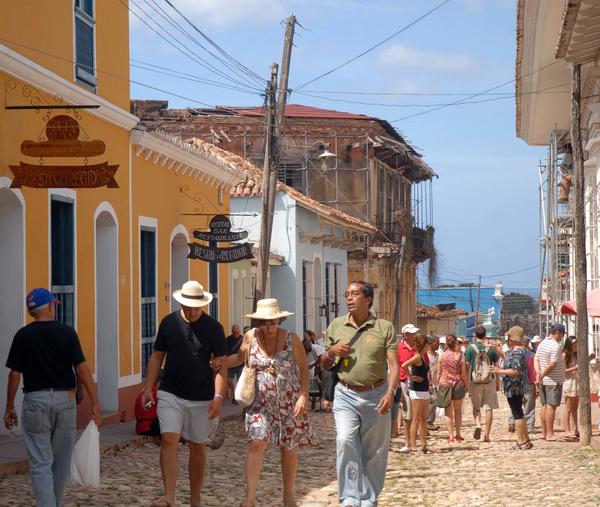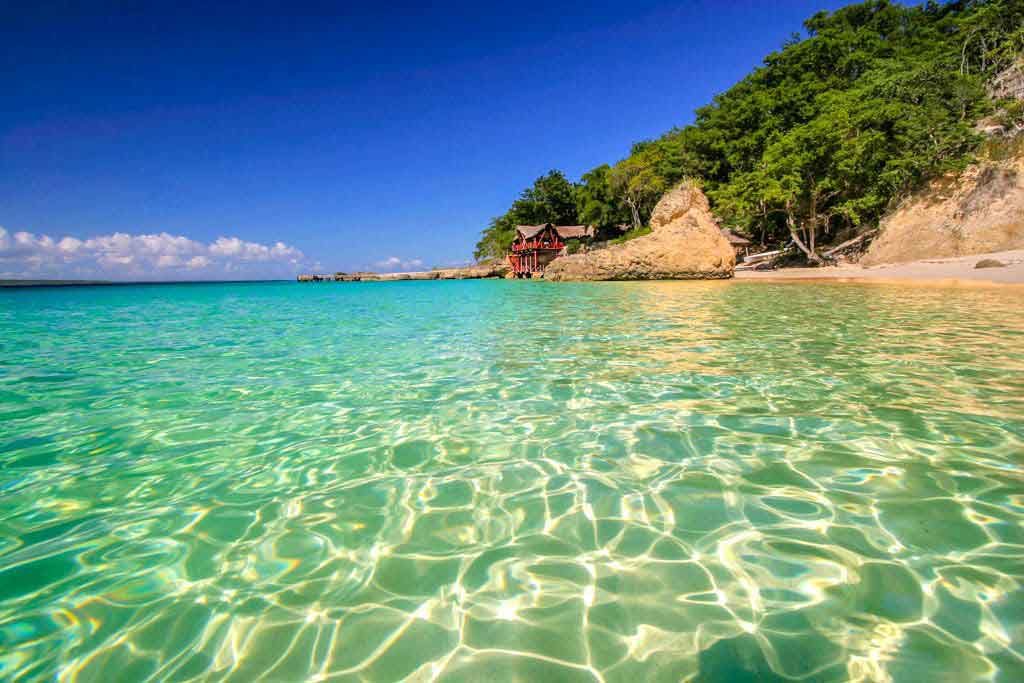 (OPINION) WHY BIG SPENDERS ASIAN TOURISTS ARE NOT VISITING CUBA ?.
(OPINION) WHY BIG SPENDERS ASIAN TOURISTS ARE NOT VISITING CUBA ?.
So you think travel to Cuba from the U.S. is a slog? Try flying in from Asia. The flight times alone are a test of endurance, stretching over 40 hours if you’re jetting off in Sydney. In fact there’s not a single direct flight to the Caribbean island from the entire Asia-Pacific region.
That may help explain why you’re unlikely to spot hordes of Asian travelers whizzing down the streets of Havana in candy-colored classic cars or knocking back mojitos in the smoky jazz halls of Trinidad. Only four Asia-Pacific nations—China, Japan, Australia, and the Philippines—rank in Cuba’s annual list of major visitor sources. Put in perspective, Canadians outnumbered Chinese visitors 30 to one, according to Cuba’s 2016 tourism statistics.
That’s a missed opportunity. According to UN figures, Asia-Pacific tourists spent $473 billion on trips abroad that year, accounting for 40 percent of total international tourism expenditure in 2016. That type of cash could go a long way in helping Cuba meet its goal of tripling tourism revenues by 2030, as it strives to revive an economy straining under trade sanctions and U.S. President Donald Trump’s tighter travel restrictions.
Here are three key challenges Asia’s tourists face on the journey to Cuba:
A World Away
Distance and a lack of direct flights mean airfares to the Caribbean island can be steep. Return economy flights from Brisbane, Australia, to Havana, with at least two stopovers, range from $2,000 to $5,000, according to Dallas-based fare tracking firm FareCompare. Meanwhile, tickets from Hong Kong with one stop can set you back as much as $3,000—almost double the cost of flying to nearby Cancun, Mexico.
Visa Issues
Some unhappy trekkers have found themselves stranded at U.S. or Mexican airport gates, where their long-haul flights might connect for onward travel to Havana. Unlike others boarding the same plane, many Asians are unable to travel with the usual pink-and-green tourist cards commonly available at airline desks. Passport holders from India and the Philippines join 18 nations (Syria, Iraq, and Nigeria included) in needing a special passport sticker to enter Cuba. Procuring one isn’t easy: If you find yourself in a place without a Cuban consulate, such as Manila, it requires an additional trip to a neighboring hub to apply for the sticker in person. And if that neighboring hub is Beijing, you might even need to apply for a visa (to China) in order to get your visa (to Cuba).
A further caveat: If your flight is via the U.S., you must also get a permit from a U.S.-based consulate or airline. Agencies such as California-based Cuba Travel Services can handle visas by mail, though processing times run up to 30 days—during which time the agency will keep your passport in hand.
“A lot of travel agencies aren’t focusing on the Asian market,” says Marla Recio Carbajal, the Cuban founder of luxury travel specialist Havana Reverie, which has been hosting corporate retreats, galas, private dinners, and fashion shows for clients since 2016. Due to their proximity, Cuba’s government has focused on luring tourists from Canada, Latin America, or Europe with cruise tours and package stays at beach resorts. “But because more Asians are coming, I think tour operators realize there is big potential there,” she says.
Of the 50 to 60 events Carbajal’s company hosts a year, only one has involved an Asian group, which flew in for a cigar festival. Havana Reverie plans to tap the Asian market with Chinese- and Japanese-language versions of her website.
“I do think [Cuba has] missed the Asian market,” says Collin Laverty, president of Cuba Educational Travel. “It’s gotten better, but not long ago it was a challenge to book a hotel room in Cuba, something that can be off-putting to someone considering flying across the world to visit.”
 (OPINIÓN) ¿POR QUÉ LOS GRANDES GASTADORES TURISTAS ASIÁTICOS NO ESTÁN VISITANDO CUBA?
(OPINIÓN) ¿POR QUÉ LOS GRANDES GASTADORES TURISTAS ASIÁTICOS NO ESTÁN VISITANDO CUBA?
¿Entonces piensas que viajar a Cuba desde los EE. UU. Es una tarea difícil? Intenta volar desde Asia. Los tiempos de vuelo por sí solos son una prueba de resistencia, que se extiende durante más de 40 horas si vas a despegar en Sídney. De hecho, no hay un solo vuelo directo a la isla caribeña desde toda la región de Asia-Pacífico.
Eso puede ayudar a explicar por qué es poco probable que descubras hordas de viajeros asiáticos que pasan zumbando por las calles de La Habana en automóviles clásicos de color caramelo o derribando mojitos en los humeantes salones de jazz de Trinidad. Solo cuatro naciones de Asia-Pacífico-China, Japón, Australia y Filipinas-figuran en la lista anual de Cuba de las principales fuentes de visitantes. En perspectiva, los canadienses superaron en número a los visitantes chinos de 30 a uno, según las estadísticas de turismo de 2016 en Cuba.
Esa es una oportunidad perdida. Según cifras de la ONU, los turistas de Asia y el Pacífico gastaron $ 473 mil millones en viajes al exterior ese año, representando el 40 por ciento del gasto total del turismo internacional en 2016. Ese tipo de efectivo podría ser de gran ayuda para que Cuba cumpla su objetivo de triplicar los ingresos del turismo 2030, mientras se esfuerza por reactivar una economía que se esfuerza por sanciones comerciales y por las restricciones de viaje más estrictas del presidente de los Estados Unidos, Donald Trump.
Aquí hay tres desafíos clave que enfrentan los turistas de Asia en su viaje a Cuba:
Un mundo de distancia
La distancia y la falta de vuelos directos hacen que las tarifas aéreas a la isla caribeña sean abruptas. Los vuelos de ida y vuelta desde Brisbane, Australia, a La Habana, con al menos dos escalas, oscilan entre $ 2,000 y $ 5,000, según la firma de seguimiento de tarifas con sede en Dallas FareCompare. Mientras tanto, las entradas desde Hong Kong con una parada pueden retrasar tanto como $ 3,000, casi el doble del costo de volar a la cercana ciudad de Cancún, México.
Cuestiones de Visa
Algunos excursionistas descontentos se han quedado varados en las puertas de los aeropuertos de Estados Unidos o México, donde sus vuelos de larga distancia podrían conectarse para su posterior viaje a La Habana. A diferencia de otros que suben al mismo avión, muchos asiáticos no pueden viajar con las habituales tarjetas turísticas de color rosa y verde comúnmente disponibles en los mostradores de las líneas aéreas. Los titulares de pasaportes de India y Filipinas se unen a 18 países (incluidos Siria, Irak y Nigeria) en la necesidad de un adhesivo especial para el pasaporte para ingresar a Cuba. Procurar uno no es fácil: si te encuentras en un lugar sin un consulado cubano, como Manila, se requiere un viaje adicional a un centro vecino para solicitar la pegatina en persona. Y si ese centro vecino es Beijing, incluso podría necesitar solicitar una visa (a China) para obtener su visa (a Cuba).
Una advertencia adicional: si su vuelo es a través de los EE. UU., También debe obtener un permiso de un consulado o aerolínea con sede en EE. UU. Las agencias como Cuba Travel Services, con sede en California, pueden manejar visas por correo, aunque los tiempos de procesamiento pueden durar hasta 30 días, tiempo durante el cual la agencia tendrá su pasaporte a mano.
“Muchas agencias de viajes no se están enfocando en el mercado asiático”, dice Marla Recio Carbajal, fundadora cubana de la especialista en viajes de lujo Havana Reverie, que ha organizado retiros corporativos, galas, cenas privadas y desfiles de moda para clientes desde 2016. Debido a su proximidad, el gobierno cubano se ha enfocado en atraer a turistas de Canadá, América Latina o Europa con viajes de crucero y estadías en paquetes en resorts de playa. “Pero debido a que vienen más asiáticos, creo que los operadores turísticos se dan cuenta de que hay un gran potencial allí”, dice.
De los 50 a 60 eventos que la compañía de Carbajal organiza al año, solo uno ha involucrado a un grupo asiático, que voló para un festival de cigarros. Havana Reverie planea aprovechar el mercado asiático con versiones en chino y japonés de su sitio web.
“Creo que [Cuba] se perdió el mercado asiático”, dice Collin Laverty, presidente de Cuba Educational Travel. “Ha mejorado, pero no hace mucho tiempo era un desafío reservar una habitación de hotel en Cuba, algo que puede ser desagradable para alguien que considere volar por todo el mundo para visitar”.
Agencies/ Bloomberg/ Kristine Servando/ Internet Photos/ Arnoldo Varona/ TheCubanHistory.com
THE CUBAN HISTORY, HOLLYWOOD.







